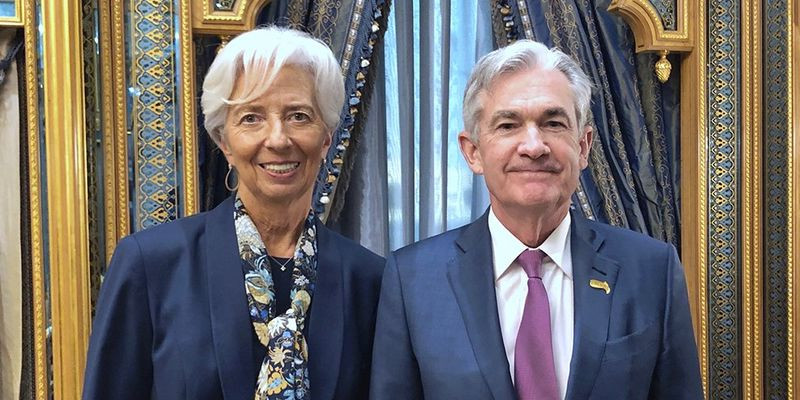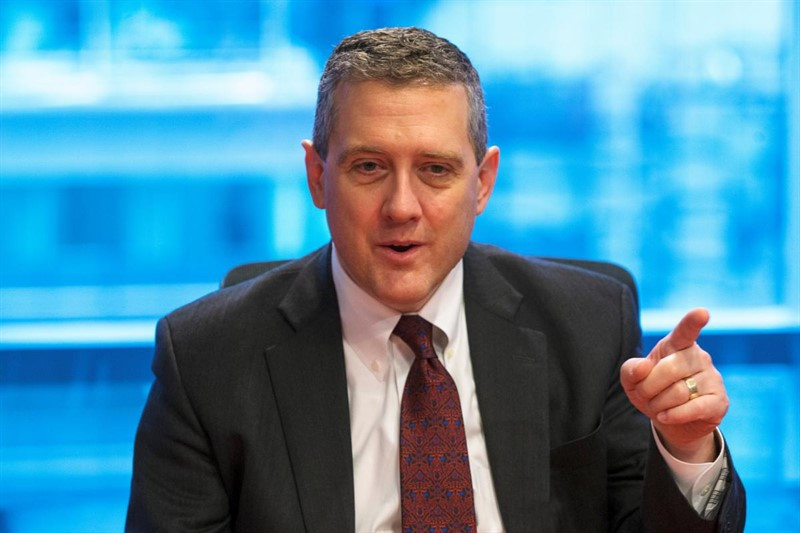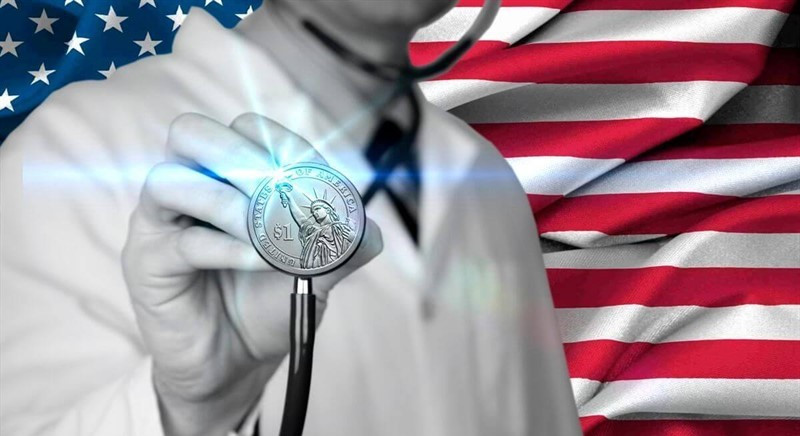
The greenback started the new week on a positive note. Following the results of yesterday's trading, the dollar rose by more than 0.2% against the euro due to some easing of concerns about the possible consequences of the new COVID-19 strain for the American economy.
According to White House adviser Anthony Fauci, at the moment Omicron has been detected in about a third of US states, but most of the new severe cases of the disease are associated with the Delta variant.
"There is no evidence yet that Omicron is heavier than other strains," he said.
Although it is too early to draw far-reaching conclusions, hopes that the worst-case scenario is not being realized have contributed to an improvement in market sentiment.
Against this background, traders' interest in risk increased, which led to a decrease in quotes and, accordingly, an increase in the yields of US Treasury securities.
The day before, the indicator for 10-year treasuries jumped to 1.1433% from 1.342% recorded on Friday.
The rise in US Treasury bond interest rates has traditionally supported the dollar. After all, the higher the rates, the more attractive the dollar becomes in the eyes of investors.
It is noteworthy that even with the revival of risk appetite, the single currency failed to develop a convincing growth momentum.
During yesterday's trading, the EUR/USD pair rose to 1.1310, but then went down and closed in the red, near 1.1285.
It seems that the euro's role as a funding currency is holding back the growth of EUR/USD in the current market conditions, when investors begin to show interest in risk again.
In addition, fears of a new strain of COVID-19 have somewhat subsided, and traders have switched their attention to monetary policy.

Next week, the Federal Reserve and the European Central Bank will hold their final meetings this year.
The Fed may announce a faster reduction in asset purchases and voice its opinion on future rate hikes on December 15.
In less than a day, the ECB may announce plans for two key programs.
In anticipation of specifics from central banks on both sides of the Atlantic, the EUR/USD pair remains in the range of 1.1235-1.1385, originating from November 30.
While the main currency pair is determined with the direction of movement, the USD index continues to settle below 96.50.
As for the ECB and the Fed, inflation and employment – these two indicators are decisive in the current policy of central banks.
The ECB may set policy for a relatively short period at a meeting this month, given the increased uncertainty, but should not delay making a decision because markets need direction, ECB President Christine Lagarde said last Friday in an interview with Reuters.
Conservative politicians urged the ECB to avoid long-term commitments at the December 16 meeting, given the recent high inflation rates and the resumption of the coronavirus pandemic, including the appearance of the Omicron variant.
Some even discussed the possibility of postponing the decision to the beginning of 2022, hoping that the delay would bring more clarity to growth and inflation - an option that Lagarde strongly rejected on Friday.
"There are ways to bring clarity without making long-term commitments, and I would make the mistake of not making very long-term commitments because there is too much uncertainty. But equally, we need to make it very clear that we are ready to act in both directions," the ECB head said.
According to her, as soon as the conditions for a rate hike are met, the ECB will not hesitate to act.
At the same time, Lagarde downplayed concerns about the Omicron option, arguing that Europe has adapted well to life in a pandemic.
"We have to be alert, but I think we also have to be confident in the fact that we have learned to live with the previous options. Another wave that we are experiencing in the eurozone is what we have included in our unfavorable scenario," she said.

The December meeting of the ECB Governing Council will be the most important this year. The central bank has already announced that in March it will curtail its €1.85 trillion pandemic-era emergency stimulus program and recalibrate other tools to fill the void.
Lagarde did not discuss the options for holding the meeting, but said that she still holds the opinion that the Emergency Procurement Program in connection with the pandemic, a key tool of the ECB over the past two years, should stop, and that interest rates should not rise next year.
Klaas Knot, one of the most conservative members of the ECB Governing Council, supported Lagarde's call for unchanged rates on Friday, but left the door open for movement in 2023, taking into account inflationary risks.
The head of the ECB, however, maintained her favorable view of the surge in consumer prices, despite the fact that the risks of their acceleration seem to be growing, and even politicians in the US are abandoning their opinion that high inflation is temporary.
"Inflation may have already peaked," she said, adding that, unlike the United States, there is still a significant decline in the European labor market, as unemployment remains high.
"I see an inflation profile that looks like a hump that eventually decreases. We firmly believe that inflation will decrease in 2022," Lagarde said.
Inflation in the currency bloc soared to a record 4.9% last month, more than double the ECB's 2% target. Economists predict that the indicator will fall below this mark no earlier than the end of 2022.
Fed policymakers are likely to accelerate the winding down of their bond-buying program when they meet next week, as they are forced to respond to increased price pressures in the US.
"Even Friday's weak report on the US labor market does nothing to prevent the Fed from accelerating the reduction of QE," Wells Fargo strategists noted.
Last month, the American economy added only 210,000 jobs, which is less than half of what experts expected. But the average hourly wage has increased by 4.8% over the past 12 months, and the unemployment rate has dropped to 4.2%.
"The danger is that we will get too high inflation. It's time for the Fed to react at the upcoming meetings," said St. Louis Fed President James Bullard.,
He believes that the US central bank should complete its bond-buying program by March and raise rates at least twice next year.

"The inflation figures are quite high, and I think that stopping the QE reduction by March would help us do more if inflation does not dissipate, as expected, in the next couple of months," added Bullard.
The Fed has kept interest rates near zero since March 2020. In November, it began reducing its monthly bond purchases by $120 billion at such a pace as to completely stop them by June 2022.
However, given that inflation in the US is more than twice the Fed's 2% target and the risk is increasing that it will not decrease as quickly as politicians would like next year, Fed Chairman Jerome Powell said last week that at the next FOMC meeting he and his colleagues will consider the possibility of accelerating the reduction of QE.
At the same time, Powell said that it was time to abandon the word "temporary" regarding inflation.
Although investors have been waiting for months for such a recognition from him, Powell's statement produced a bombshell effect on the markets.
As a result, traders began betting that following the results of the next Fed meeting, the estimates of price pressure will be revised upward, and the FOMC dot chart will reflect the prospects for a more aggressive rate hike.
"The new Omicron strain COVID-19 is the only factor that can keep the Fed from accelerating the pace of curtailing the asset purchase program in order to clear space for an earlier rate hike. We expect that in 2022 the Fed will raise rates three times, and by the time of the first increase, the dollar should already strengthen," Societe Generale analysts noted.
"In case of a pullback, the USD index should receive support in the area of 95.10-94.50 (23.6% Fibonacci retracement of the uptrend since January 2021). As long as this level holds, we do not expect the decline to deepen. Successfully protecting the 95.10–94.50 area will lead to continued growth in the direction of 97.70 and, possibly, to 99.75 (76.4% Fibonacci retracement since 2020)," they added.
According to analysts, it is quite easy to imagine a decline in the euro to $1.10, but a drawdown of the EUR/USD pair significantly below this level will require powerful new drivers.
"The bearish trend line at 1.1525-1.1600 should play the role of short-term resistance. The pair needs to rise above 1.1700 again (March 2020 low and the peak of October) in order to talk about a trend reversal. If the pair fails to form a base at the current levels, and it continues to fall below 1.1160, the next potential target will be 1.1040, and then 1.0840," Societe Generale reported.
Some analysts note that even if the Fed completes its quantitative easing program within a few months, this does not necessarily mean that a number of rate hikes are a given.
In addition, there are concerns that a hasty tightening of monetary policy by the US central bank may slow down the recovery of the national economy, since little is known about the potential of Omicron so far.

"The next few months will be rich in information about Omicron's risks, moderately slowing demand for goods and services in the face of the rejection of huge financial and monetary stimulus, as well as the potential easing of some supply chain pressures that led to price increases," BlackRock strategists said.
Credit Agricole analysts see a limited potential for USD growth, as many positive factors are already embedded in the quotes.
"The forecast for the US dollar in the near future may follow the logic of the so-called "dollar smile". The US currency can benefit from its safe haven status during bouts of risk aversion, and during periods of recovery of risk appetite to attract funds from investors-carry. However, it is worth noting that many positive factors have already been incorporated into the dollar exchange rate, which is already overbought, while the euro already looks very oversold," the bank said.
Scotiabank analysts, in turn, pay attention to the recent words of Lagarde that as soon as the conditions for raising the rate are met, the central bank will not hesitate to act.
"Comments by Lagarde signal a higher willingness to act on the part of the ECB, which may help the euro to prevent a noticeable fall below $1.10," they said.
So far, hawkish expectations from the Fed are still in place and growing, despite conflicting US employment data, which supports demand for the dollar.
The ECB, on the other hand, continues to adhere to a generally dovish attitude. This may mean that the pressure on the euro will continue, even regardless of the development of the situation with Omicron, analysts say ING.
They believe that in the near future the EUR/USD pair may test the 1.1200 area again.
A breakthrough of this area will target 1.1160 and 1.1120.
On the other hand, resistance is located at 1.1270, 1.1310 and 1.1350.
 English
English 
 Русский
Русский Bahasa Indonesia
Bahasa Indonesia Bahasa Malay
Bahasa Malay ไทย
ไทย Español
Español Deutsch
Deutsch Български
Български Français
Français Tiếng Việt
Tiếng Việt 中文
中文 বাংলা
বাংলা हिन्दी
हिन्दी Čeština
Čeština Українська
Українська Română
Română

